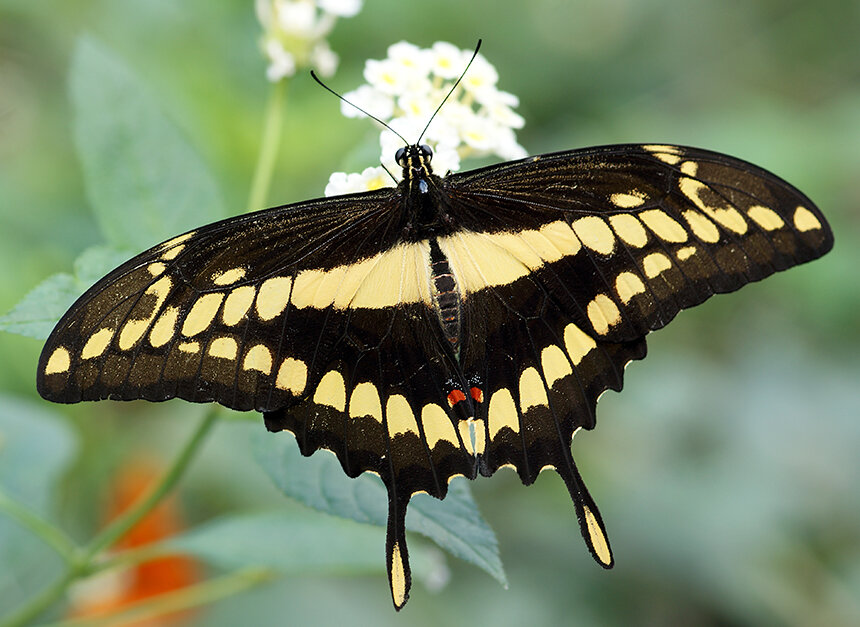North America’s largest butterfly expands into RI
By TODD McLEISH/ecoRI News contributor
 |
| The wing span of a giant swallowtail butterfly is 4 to 6.25 inches. (istock) |
“When it comes flying at you, you swear it’s a bat because it’s so big,” said Kent McFarland, a conservation biologist at the Vermont Center for Ecostudies, who has studied the swallowtail’s range expansion. “It’s huge and unmistakable.”
 |
| Mothra, one of Godzilla's least impressive enemies |
He said one wayward giant swallowtail was reported from Charlestown in the 1960s, and a small colony was observed in the Arcadia Management Area in Exeter from 1983-85. Many have been observed throughout Rhode Island in the last four or five years, however, including in Tiverton, Little Compton, Bristol, Warwick, Westerly and South Kingstown.
“They’ve been steadily moving eastward from the Midwest into New England over the last 10 years or so, and now we’re finding them in Rhode Island,” Pavulaan said. “They’re definitely breeding in Rhode Island, too.”
Why the species is expanding its range is unknown. McFarland believes it has to do with the changing climate and the range of its host plant, a shrub called prickly ash. Prickly ash is one of the only plants that the butterfly’s caterpillars will eat, and the shrub is found in scattered pockets in much of the Northeast.
“They’ve expanded wherever there’s a host plant, and they can expand north because of the warming climate,” McFarland said. “It’s all about winter climate change; they can withstand some pretty cold temperatures, but not super cold.”
The species isn’t expected to continue its range expansion much further north, however, because prickly ash isn’t found north of New England.
“They’re trying to keep going north, but it’s a dead end for them,” McFarland said. “They strike out for new territory and have shown up in the Canadian Maritimes and Quebec City, but they’ve outrun their host plant.
“The caterpillars can feed on gas plant, too, and a lot of people are planting that in their gardens, so it might spread around a little bit more. Somehow they find it and lay their eggs on it. It’s a little like a bird feeder — we’ve made islands of refuge for them with gas plants.”
McFarland and Pavulaan said one of the most interesting features of the giant swallowtail is that its caterpillars look like bird poop to camouflage themselves from predators.
“They even have a greasy look to them like they’re wet, but they’re not,” McFarland said. “And if looking like bird poop doesn’t keep you away, if you touch them, they have these bright orange horns that come out of their head and give off a foul-smelling and foul-tasting chemical.”
Pavulaan said they also have another notable feature to avoid predators.
“I’ve never heard anyone else mention this, but they have this characteristic pose when they open their wings flat to sun themselves,” he said. “Imagine looking into the mouth of a serpent with teeth. The row of spots on the hind wing looks like a giant serpent’s mouth. I suspect that when predators like birds see that, they stay clear.”
Rhode Island resident and author Todd McLeish runs a wildlife blog.